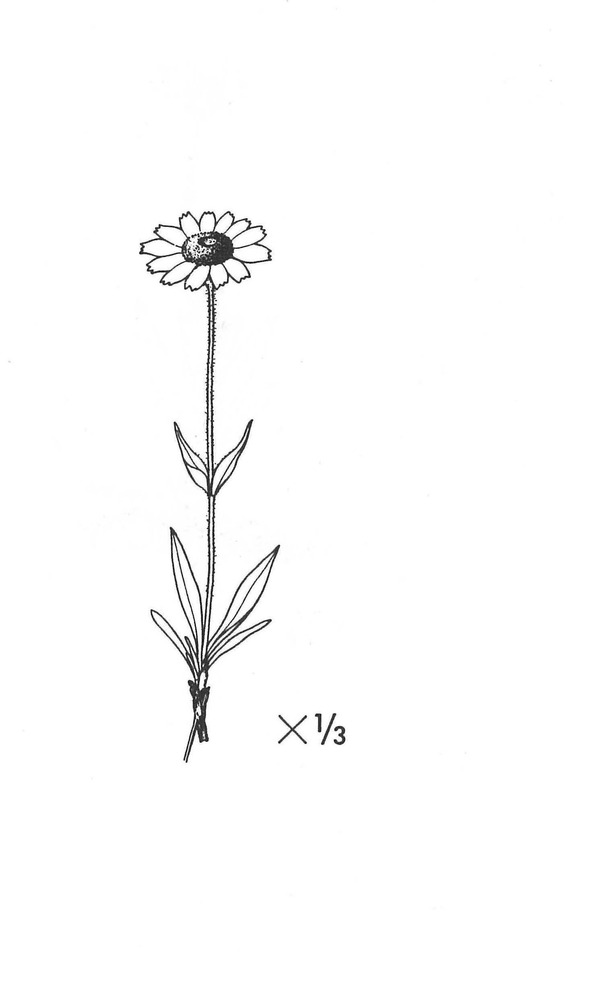| Arnica alpina subsp. angustifolia (M. Vahl) Maguire | |||
| |||
| Family | Compositae — APG family: Asteraceae | ||
| Synonyms | Arnica angustifolia M. Vahl. | ||
| Description | Stem from slender, scaly rhizome; basal leaves lanceolate to broadly lanceolate, entire or remotely denticulate, acute to acuminate, pilose and glandular; stem leaves in 1-3 pairs, reduced; heads mostly single; involucrum densely lanate-pilose, with septate hairs; involucral bracts lanceolate, acute or acuminate, pilose and glandular, especially toward base; ligules yellow, with teeth 0.5-2.0 mm long; disk flowers hirsutulose; achenes hirsute; pappus white, barbellate. | ||
| Ecology | Dry alpine slopes. A. alpina described from northern Europe, subsp. angustifolia from Spitzbergen, Greenland, and arctic America. | ||
| Taxonomy notes | Broken line on circumpolar map indicates range of subspecies other than those occurring in Alaska. The Scandinavian plant is subsp. alpina. |
This is a digital representation of Eric Hultén’s ‘Flora of Alaska and Neighboring Territories: A Manual of the Vascular Plants’, which was published by Stanford University Press in 1968. The book was digitized by C. Webb (at UAMN) as part of the Flora of Alaska project, with funding by the US NSF (Grant 1759964 to Ickert-Bond & Webb), and with permission of Stanford University Press. Data and images © 1968 Board of Trustees of the Leland Stanford Jr. Univ. Usage licence: Creative Commons BY-NC-SA 4.0. NB: You may find OCR errors; please refer to the hard-copy if in doubt.
